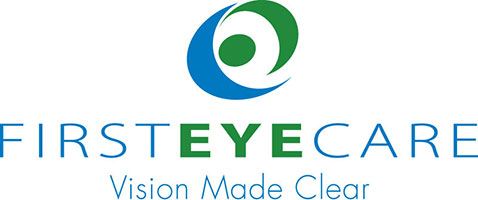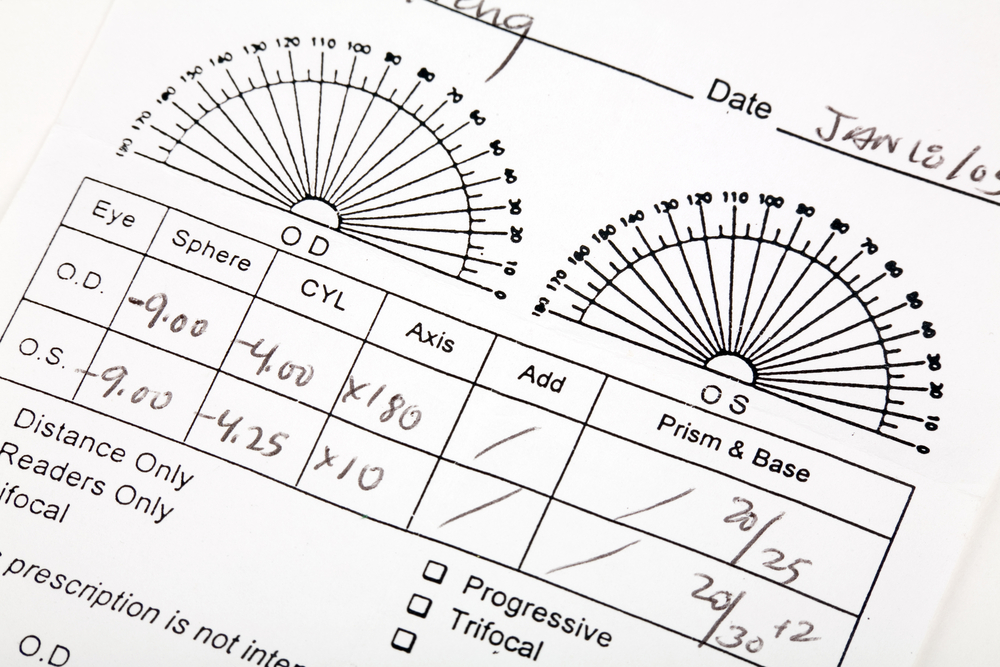Eyeglass Prescriptions Can Sometimes be Difficult to Understand
Shopping for a new pair of eyeglasses can be an overwhelming experience, especially if you aren’t sure what all those numbers on your prescription mean. Reading (and understanding) your eyeglass prescription can be undoubtedly challenging. And while many people adopt the attitude of “leave it to the experts” when it comes to deciphering an eyeglass prescription, it helps to know what all these numbers and terms mean.
After you come into First Eye Care DFW for a comprehensive eye exam, chances are you will leave our office with a little piece of paper full of numbers. These numbers are all very important and will help ensure your next pair of glasses are exactly what your vision needs. Before you invest in a new pair of glasses, you should know how to read your glasses prescription. In today’s article, we are going to breakdown common eyeglass prescriptions, helping you better understand your vision needs after an exam.
If you have any questions or would like help reading your specific eyeglass prescription, please do not hesitate to contact First Eye Care DFW. There are many different situations that require eyeglasses, especially as you get older. When you turn 40, there are numerous common vision changes you should be aware of. Learning how to properly care for your eyes at every stage of your life is a must. Our team of experienced eye care technicians is here to help you do just that.
Common Prescription FAQs
At First Eye Care DFW, we are dedicated to helping our patients meet all their vision needs. For some, this means coming in for regular eye exams, while others need support for ocular diseases. Before we breakdown the various terms on your eyeglass prescription, let’s go over some of the most frequently asked questions we get about eyeglass and contact prescriptions:
- What do all these numbers mean?
- Why are they important?
- Does it matter whether I can read my prescription or not?
- Are there different prescriptions for eyeglasses and contact lenses?
- Can I get a prescription for my sunglasses?
- What are the different types of lens coatings? Will they affect my prescription?
What Do the Terms on Your Eyeglass Mean?
If you are having a difficult time making sense of your eyeglass prescription, you are not alone. Even though these numbers may seem random and have you proclaiming, “it’s all Greek to me!” they make sense once you know what they refer to. Before we go over some of the most common eyeglass prescription FAQs we receive, let’s dive into the various terms on your eyeglass prescription.
If you have a prescription handy, get it out and follow along. Typically, the prescription comes on a standard grid format with printed fields for OD, OS, SPH, CYL, Axis, etc. The value of these fields should either be filled in electronically or handwritten by your First Eye Care DFW optometrist. Let’s now go over what each of those terms mean and why they are so important:
- Sphere (SPH) – Sphere refers to how much correction is needed to make up for your nearsightedness or farsightedness. The number in this column is the degree of correction.
- Cylinder (CYL) – The cylinder number is the lens power necessary to correct any astigmatism in your eyes. Astigmatism can be present in one or both eyes and is a refractive problem, not a disease.
- Axis – The axis field refers to the degree of astigmatism. This is measured in degrees ranging from 1 to 180. 90 refers to the vertical meridian (center) of the eye, whereas 180 is about the horizontal meridian. In the event you do not have astigmatism, this field will be blank.
- Prism – The number in this field refers to the prismatic power that is needed to fix any alignment issues with your eyes, such as double vision or lazy eye. Prism is a less common prescription that not everyone will have.
- Base – Depending on your vision, a base may either have a column of its own or will be included in the prism column. Base is related to prism and indicates which direction it is: BO (base out), BU (base up), BI (base in), or BD (base down). Again, this is one of the lesser common terms on a prescription, so it is not as important to understand as some of the others.
- Pupillary Distance (PD) – This number refers to the distance from the middle of one pupil to the center of the other. PD will determine the optical center of your eyes. This helps ensure the lenses provide you with the most comfortable vision possible.
- ADD or NV – If you have multifocal lenses, reading, or computer glasses, your prescription will likely include a value for ADD or NV. This number will include a (+) symbol and is the magnifying power needed for bifocal, multifocal, progressive, or reading glasses.
Now that you have a better idea of what your prescription means, you should be able to read your Rx with more confidence. If any of the above doesn’t make sense or if you would like clarification about a specific value in any of the columns discussed above, please do not hesitate to reach out to First Eye Care DFW.
What Do OD and OS Mean?
You may have noticed a couple of terms on your eyeglass prescription that we didn’t go over: OD and OS. This is because these two abbreviations are critical to how well you understand your prescription.
Short for oculus dexter (OD) and oculus sinister (OS), they are the Latin terms for right eye and left eye, respectively. Some people may also have a column for OU (oculus uterque), which refers to both eyes.
Many optometrists have moved towards the modernization of eyeglass prescriptions, using RE (right eye) and LE (left eye) instead. However, the majority of standard prescriptions still include this Latin terminology. Some people may require more correction in one eye over the other. It is also common for a specific eye to have astigmatism when the other does not. If you have questions about this or need assistance reading your prescription, give us a call. We are here to help you find exactly what you need to move forward with comfortable and clear vision. To schedule an eye exam, don’t hesitate to contact our DFW clinic today.



